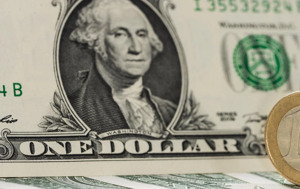Tavex uses cookies to ensure website functionality and improve your user experience. Collecting data from cookies helps us provide the best experience for you, keeps your account secure and allows us to personalise advert content. You can find out more in our cookie policy.
Please select what cookies you allow us to use
Cookies are small files of letters and digits downloaded and saved on your computer or another device (for instance, a mobile phone, a tablet) and saved in your browser while you visit a website. They can be used to track the pages you visit on the website, save the information you enter or remember your preferences such as language settings as long as you’re browsing the website.
| Cookie name | Cookie description | Cookie duration |
|---|---|---|
| tavex_cookie_consent | Stores cookie consent options selected | 60 weeks |
| tavex_customer | Tavex customer ID | 30 days |
| wp-wpml_current_language | Stores selected language | 1 day |
| AWSALB | AWS ALB sticky session cookie | 6 days |
| AWSALBCORS | AWS ALB sticky session cookie | 6 days |
| NO_CACHE | Used to disable page caching | 1 day |
| PHPSESSID | Identifier for PHP session | Session |
| latest_news | Helps to keep notifications relevant by storing the latest news shown | 29 days |
| latest_news_flash | Helps to keep notifications relevant by storing the latest news shown | 29 days |
| tavex_recently_viewed_products | List of recently viewed products | 1 day |
| tavex_compare_amount | Number of items in product comparison view | 1 day |
| Cookie name | Cookie description | Cookie duration |
|---|---|---|
| chart-widget-tab-*-*-* | Remembers last chart options (i.e currency, time period, etc) | 29 days |
| archive_layout | Stores selected product layout on category pages | 1 day |
| Cookie name | Cookie description | Cookie duration |
|---|---|---|
| cartstack.com-* | Used for tracking abandoned shopping carts | 1 year |
| _omappvp | Used by OptinMonster for determining new vs. returning visitors. Expires in 11 years | 11 years |
| _omappvs | Used by OptinMonster for determining when a new visitor becomes a returning visitor | Session |
| om* | Used by OptinMonster to track interactions with campaigns | Persistent |
| Cookie name | Cookie description | Cookie duration |
|---|---|---|
| _ga | Used to distinguish users | 2 years |
| _gid | Used to distinguish users | 24 hours |
| _ga_* | Used to persist session state | 2 years |
| _gac_* | Contains campaign related information | 90 days |
| _gat_gtag_* | Used to throttle request rate | 1 minute |
| _fbc | Facebook advertisement cookie | 2 years |
| _fbp | Facebook cookie for distinguishing unique users | 2 years |
Trump Banned the Creation and Issuance of Central Bank Digital Currency

US President Donald Trump signed an executive order in late January banning the creation and issuance of central bank digital currency (CBDC). Now, several senators are seeking to pass it into law in Congress.
“Federal agencies are prohibited from taking steps to create, issue, or promote a CBDC,” states the regulation published on the White House website.
The government and Congress have now changed course dramatically on central bank digital currencies. Back in 2022, Biden signed an executive order to accelerate the development of central bank digital currencies. Regulators also began to impose restrictions on private cryptocurrencies under Biden, with major crypto exchanges like Coinbase, Binance, and many others coming under regulatory scrutiny.
Trump’s order was welcomed by cryptocurrency enthusiasts. The administration says its policy aims to make the United States a hub for innovation in crypto assets. It will do so by easing regulations on cryptocurrencies, but at the same time prohibiting the development of a central bank digital currency because it “threatens people’s freedoms.” So Trump is deregulating cryptocurrencies, but banning the creation of central bank digital currencies using this technology.
Namely, cryptocurrencies, which allow for private and third-party settlement, also have their downside. While much of private digital money is decentralised, digital money can also be centralised. By using ledger technology and centralizing the system, it allows a central bank or government to delete money from bank accounts or program it so that it can only be used to make certain purchases.
A Cato Institute study published in the spring of 2023 found that US citizens do not support a central bank digital currency. The survey asked: “Which of these two statements is more consistent with your view?” The statements and the percentage of respondents are shown in the graph below.
The Example of Canada and China
There is also precedent for governments taking advantage of people’s bank accounts in the US’s neighbours. In 2022, Canadian Prime Minister Justin Trudeau decided to freeze the bank accounts of around 200 people who participated in a truck drivers’ protest against the coronavirus restrictions. The instructions to freeze the assets were given to banks, but in the case of a CBDC the government could do it directly. In essence, people were cut off from the financial system entirely. By doing so, Canada set a dangerous precedent, showing that even democratic Western countries can take such totalitarian steps.
In China, the government is already testing central bank digital money through pilot projects. The People’s Bank of China is developing a digital yuan (e-CNY), which was offered for download to guests of the 2022 Beijing Olympics, for example. Among other things, the Chinese have also tested the ability to delete citizens’ money from their accounts. Given China’s social credit system, this solution is very suitable for a totalitarian government, as it allows for the punishment of citizens who are not obedient.
Support for CBDC Ban in Congress
Trump’s decision was heavily influenced by Vivek Ramaswamy, an entrepreneur and politician who ran for president last year on the Republican ticket. “Central bank digital currency, in my opinion, is a threat to freedom in this country,” he told Bloomberg in January. “It gives the government a mechanism to empty your bank account if you say or do something that the government doesn’t like. I talked to Trump about it, and he brought it up afterward.”
Utah Senator Mike Lee, who is also in favor of auditing the US gold reserves at Fort Knox, is also actively fighting against CBDC . In early February, he introduced a bill that would make Trump’s CBDC ban permanent. In the Senate, the bill’s biggest supporters are Texas Senator Ted Cruz and Florida Senator Rick Scott.
“The United States doesn’t need a central bank digital currency to understand that this is a bad idea,”
Lee said.
“We see what happened in China with the digital yuan. In early testing, China wiped its citizens’ money out of their accounts after a certain period of time. This forced Chinese citizens to use their savings as the government dictated. My bill protects against such interference by prohibiting the Federal Reserve and all government agencies from creating or issuing CBDCs. Whether that’s a direct CBDC offering to consumers or a model with intermediaries.”
Federal Reserve Chairman Jerome Powell has said that they will need approval from the US Congress and the public to implement a CBDC. “We will not move forward with this unless Congress supports it. Ideally, it would be accompanied by legislation,” Powell said.
Critics: The US is Now Lagging Behind Others in Developing Money

Trump’s critics say the decision means the United States is now lagging behind other countries in developing money. More than 130 countries, representing 98 percent of the world’s gross domestic product, are currently developing central bank digital currencies, Reuters reports.
CBDC proponents say that digital money will soon enable real-time cross-border payments that operate 24/7
They are also capable of replacing physical cash. Therefore, the development of CBDC, they say, will allow it to keep pace with technological changes and developments. It should also increase security and enable better combating money laundering.
Opponents of CBDCs, on the other hand, argue that many of the benefits of CBDCs can be developed through existing payment systems. Protesters say central bank digital currencies could become a way for governments to spy on citizens and control how they spend their money.
Josh Lipsky, director of central bank digital currency monitoring at the Atlantic Council, a think tank, told Reuters that Trump’s decision gives Europe “free play” in setting privacy and cybersecurity standards for digital currencies. Trump also encourages the use of so-called stablecoins (private cryptocurrencies backed by the dollar). “These stablecoins will become the de facto digital dollar,” Lipsky said. The best-known stablecoins are Tether and Circle.
Trump’s decision and the direction of US politicians mean that central bank digital currencies are unlikely to emerge in the US within the next four years. However, many other countries, including the European Central Bank and Estonia, are developing them.
How is CBDC Different from Electronic Money in a Bank Account?

What is the difference between a CBDC and traditional, controlled euros or dollars in digital form? The main difference is that the currency held in a person’s bank account is a liability of a commercial bank (i.e. the person has a claim on the commercial bank). A CBDC, on the other hand, is a liability of a central bank, although its distribution can take place through banks, payment service providers and digital wallets. In this case too, a CBDC is a liability of the central bank.
Essentially, this means that money is also under the control of the central bank
Since central bank digital money, unlike electronic money, is also programmable, interest rates can be set on accounts, for example, either positive or negative. In the case of negative interest, a certain amount would be taken away after a certain period, in the case of positive interest, an additional amount would be added. If the central bank estimates that there is too little demand in the economy, negative interest rates can be applied to accounts, for example, to force people to spend more.
In the case of CBDC, the government also has the power to decide what digital money can be spent on. For example, it gives the opportunity to start restricting the consumption of certain products, such as fuel. It also allows, for example, to limit spending that excessively increases a person’s carbon footprint.

















